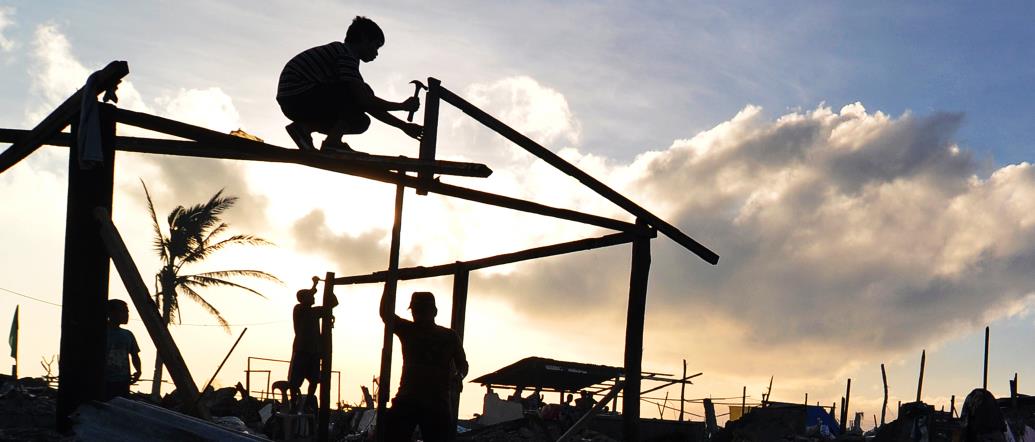Everyone, regardless of their gender, has different experiences from disasters.
Gender dynamics impact both how people are affected by disasters as well as their capacity to withstand and recover from them.
For example, in Mozambique, prevailing social norms often drive women to stay close to their homes while men pick up employment outside the community.
When a flood comes, women salvage belongings and try to live on what is available, which may mean relying on negative coping strategies such as reducing food intake and taking their children, especially girls, out of school to help with household income.
Adaptive social protection (ASP) systems play a crucial role in reducing the need for negative coping strategies by increasing vulnerable populations’ resilience and access to economic opportunities.
Building on World Bank-financed interventions, Global Facility for Disaster Reduction and Recovery (GFDRR) prepared a Stocktaking of Adaptive Social Protection and Disaster Risk Management report.
It shows how various components of social protection (SP) systems have been adapted to maximize resilience-building, especially for women, before, during, and after disasters happen.
It identified four key lessons of how countries can use inclusive approaches to integrate DRM and climate resilience into their adaptive social protection programs:
1): Enhancing existing social registries for vulnerable groups:
Understanding natural hazards and their risks and including this data in SP information systems help governments respond in an inclusive manner to disasters.
For instance, after the 2018 Central Sulawesi earthquake and tsunami in Indonesia, poverty rose 0.3 percent in this region.
In the aftermath of these disasters, the existing SP system used its quick response mechanisms to provide food assistance to 20,000 households and conditional cash transfers to 10 million people.
The availability of disaggregated data in social registries plays an important role in addressing the challenges that vulnerable groups, including women, face in post-disaster recovery.
2): Leveraging economic inclusion to accommodate the needs of vulnerable populations:
Identifying opportunities to use economic inclusion as part of disaster response helps accelerate recovery and the economic impacts of the disaster while increasing the trust and understanding of local communities.
For example, in Mozambique, the government provided households affected by drought with temporary income through public works with complementary activities to increase their resilience to unexpected shocks.
The project provided flexible work hours to accommodate women, who are mostly busy with traditional caregiving roles to encourage the participation of mothers with young children. Public work activities were paired with capacity building, training, and financial literacy activities, which allowed project participants to use their income to establish a regular savings regime and foster skills to improve their living conditions.
3): Adapting SP programs to support disaster-affected populations:
Adapting cash support programs after a disaster requires careful targeting and understanding of disaster-affected population needs. Making SP programs more flexible while incorporating reliable mechanisms for identifying and targeting vulnerable populations contributes to an inclusive recovery.
For example, in the Philippines, after an unusual number of natural hazards in late 2019 and early 2020, GFDRR supported the Department of Social Welfare and Development to design an emergency cash transfer program and develop its operations manual.
The objective of this program is to provide unconditional grants to disaster-affected populations bridging the gap between existing relief assistance and early recovery efforts to empower local populations to choose how to spend the support provided by government based on their needs.
Another example of an adaptation of an existing safety net took place in the GFDRR-funded pilot, “Digital Works for Urban Resilience,” which provided approximately 1300 young men and women across four countries in Africa with short-term income-generating opportunities. This initiative contributed to building local digital skills while providing learning and livelihood opportunities.
As UN Women says on its website about this year’s International Women’s Day, “Bringing women and other marginalized groups into technology results in more creative solutions and has greater potential for innovations that meet women’s needs and promote gender equality.”
4): Enabling low-income families and female-headed households to access financial protection:
Disaster risk financing mechanisms can provide governments with resources for successful social protection responses and help them increase their fiscal resilience and resource obtention after a disaster or climate-related shock.
In Morocco, a GFDRR technical assistance supported the design of a national insurance program to protect homeowners and businesses through the establishment of a solidarity fund (Fonds de solidarité contre Les événements catastrophiques).
The solidarity fund acted as a complementary compensation package to cover uninsured low-income households.
This fund was particularly important for female-headed households, as it allowed them access to financial compensation for personal injuries (including permanent disability and death), loss of their main residence, and loss of use of their principal residence in the aftermath of a catastrophe.
Natural hazards, health, and climate-related shocks are increasingly and disproportionately affecting the poor and the most vulnerable populations, including female-headed households. Interventions are required to strengthen resilience and protect these populations against disaster impacts. Therefore, SP systems must be enhanced and adapted to respond to disaster shocks.
Photo courtesy of GFDRR.
See Global Facility for Disaster Reduction and Recovery (GFDRR) website.
See Stocktaking of Adaptive Social Protection and Disaster Risk Management report (PDF).

